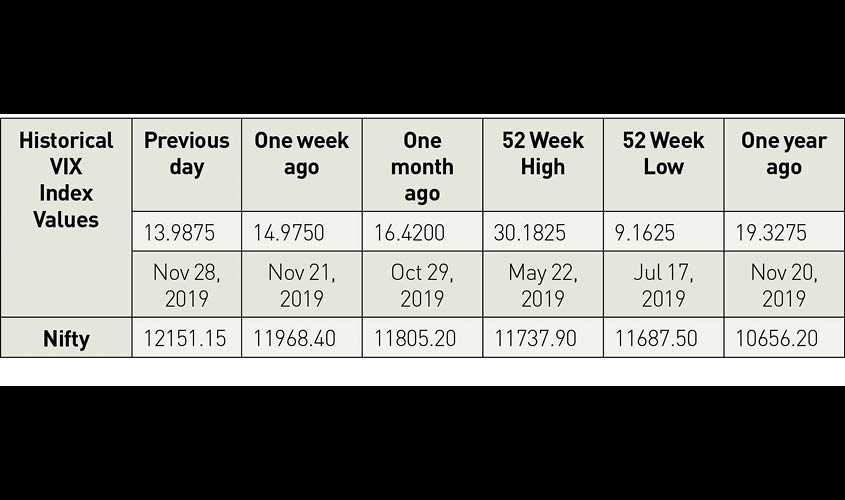Stock exchanges across the globe have been offering derivative products based on the volatility index. These products have become quite popular among the participants as it expands the opportunities available to participants and provide efficient means to hedge against volatility and enable market participants to trade expected changes in market volatility. India VIX is a volatility index based on the Nifty Index Option price and measures the expected volatility over the next 30 calendar days. For example, the India VIX which is quoting at 13.8975 (as of 29 November 2019) represents an expected Annualised change of 13.8975% over the next 30 days. Although, the India VIX is often called the ‘fear gauge’, it is actually a measure of market perceived volatility in either direction, including the upside. Few data given below may interest some readers on the direction of the India VIX and the Nifty during the last one year.
Some analysts are finding reason to worry about the India VIX’s recent decline, questioning whether it points to excessive complacency among investors and market participants. If traders are betting on a range bound market and stock markets ending in calm, it is worrisome as these have often proved vulnerable to rapid and punishing reversals. A few of our analyst friends were wondering if stocks are headed for unexpected turbulence on account of the low India VIX. It is very hard to predict the direction of the stock market with FII’s bullish on our markets and the strong Rs 8000 crore monthly SIP inflow by the retail investor in the equity market through the mutual fund route. There are three events to look at during the next month or so—RBI’s monetary policy in the first week of December ( I expect a pause in interest rates), quantum and direction of FII inflows and the outcome of the US-China trade showdown. The country’s GDP falling to 4.5 % for Q2 of the current financial year does sound alarm bells ringing for the Indian economy as it is in a major crisis. But nobody looks at macro data nowadays as the market has a mind of its own. From a next week perspective, we feel that even though the GDP numbers came out after market hours, it may have been factored in by the market participants! The indices may turn soft in the first few trading days of next week, possibly to show some respect, but should regain lost territory during the remaining part of the week.
Rajiv Kapoor is a share broker, certified mutual fund expert and MDRT insurance agent.

